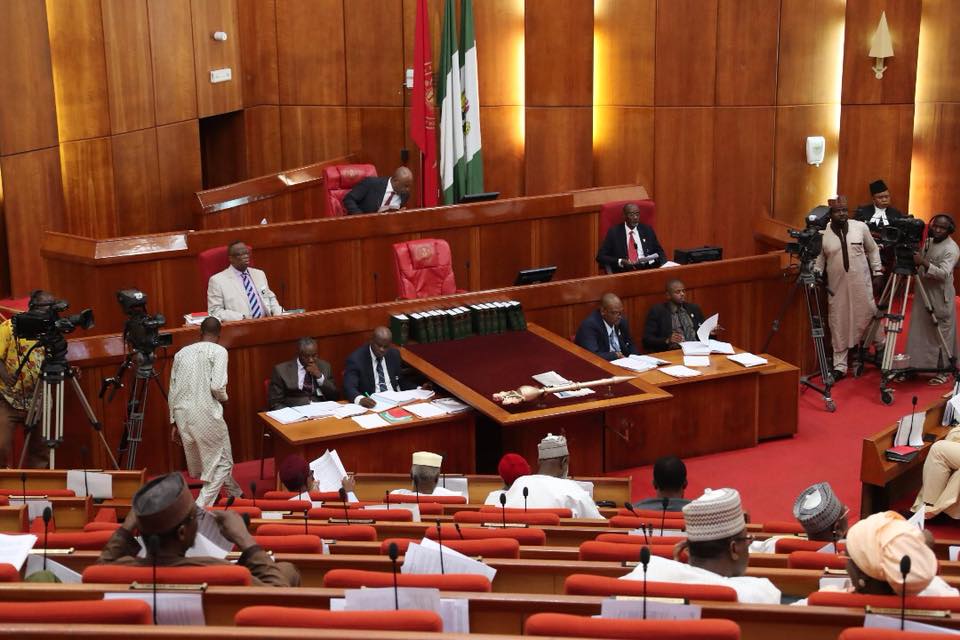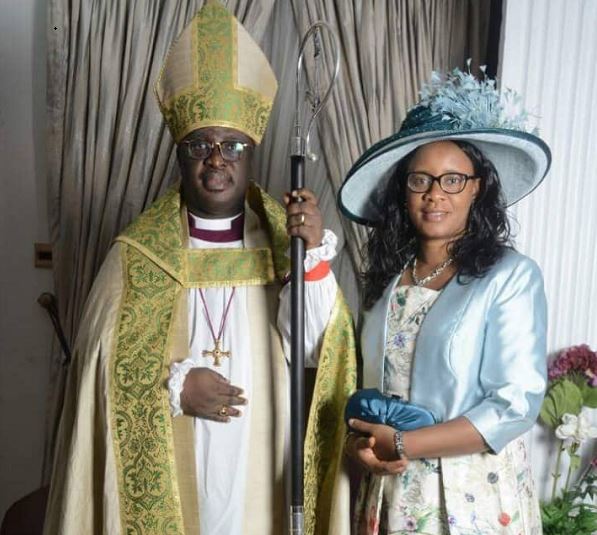BY SUMNER SHAGARI SAMBO
Since the defection of Senate President Bukola Saraki from the ruling All Progressives Congress to opposition Peoples Democratic Party, all hell has been let loose in Nigeria’s polity with the two dominant political parties threatening impeachment against each other.
With Saraki’s defection and attendance of the recent National Executive Committee (NEC) meeting of the PDP where he was crowned the leader of the party as the top ranking opposition politician holding public office, it was only a matter of time before the ruling party would go for the jugular due to the function and importance of the office of President of the Senate in the 1999 Constitution (as amended).
The number three position has been described by many observers, including myself, as the defacto post of Vice President of Nigeria, as it holds the key to the confirmation of top government appointees. It is also a major nexus for the preservation or ousting of the occupants of office of President or Vice President. This is why Saraki’s defection cannot be compared to that of former Speaker of the House of Representatives, Aminu Tambuwal in 2014 who defected from the PDP then to the APC but retained his seat. The House, unlike the Senate, does not
hold the key to crucial executive approvals especially appointees that require parliamentary confirmation.
Advertisement
In just a matter of days, the ruling APC made it clear that he should resign his position having defected to a minority party in parliament but Saraki has insisted that only constitutional provisions must be followed in asking for his removal as he will not resign from the position because he enjoys the confidence of more than two-thirds of all senators in the eight Senate.
This has now led to APC National Chairman, Adams Oshiomole threatening and even asking all senators of the party to impeach Saraki upon resumption. Also, senators of the PDP, with some alleged collaborators in the APC, are rumoured to be planning the impeachment of President Muhammadu Buhari if the APC does not back down on their threat against Saraki. The latter revelation came to light when the National Leader of the APC, Asiwaju Bola Tinubu revealed the plot recently.
But while Saraki insists that the constitutional requirement of two-thirds is 73 senators out of 109 (a widely held public view) Senator Ali Ndume and other colleagues of his including some legal professionals believe that two-thirds refer not to the entire membership of each House as at inception but rather the two-thirds of members of the Senate or House of Representatives present at any particular seating/plenary upon which a quorum is formed due to their interpretation of the distinction between two-thirds of “ALL its members” and “MAJORITY of the members” in some powers assigned to lawmakers by the 1999 Constitution. This is what we shall examine in this article.
Advertisement
But what does the constitution really say? We will examine the process of removal (or impeachment as popularly called) for both heads of the executive and parliament, as provided by the grundnorm.
In impeaching the President or Vice President, Section 143:9 of 1999 Constitution(as amended) states that:
“Where the report of the panel is that the allegation against the holder of the office has been proved, then within fourteen days of the receipt of the report at the House the National Assembly shall consider the report, and if by a resolution of each House of the National Assembly supported by not less than two-thirds majority of ALL ITS MEMBERS, the report of the panel is adopted, then the holder of the office shall stand removed from office as from the date of the adoption of the report.”
Take note of the use of two-thirds of “ALL ITS MEMBERS” while referring to membership of either the Senate or House.
Advertisement
Meanwhile, in the constitutional requirements for impeachment of President of the Senate or Speaker of the House of Representatives, Section 50:2(c) of the 1999 Constitution (as amended) states that:
“If he is removed from office by a resolution of the Senate or of the House of Representatives, as the case may be, by the votes of not less than two-thirds MAJORITY OF THE MEMBERS of that House.”
Also, note the use of two-thirds “MAJORITY OF THE MEMBERS” while referring to membership of either the Senate or House but this time with “ALL” being omitted for the same parliamentary action.
So the question is why did the 1999 Constitution use “all” while referring to two-thirds majority of parliamentarians required to impeach a President or his Vice President while the same constitution is silent on the use of same when it comes to impeachment of President of the Senate or Speaker of House of Representatives?
Advertisement
Is there a different two-thirds requirement when it comes to impeachment of President/Vice President and Senate President/Speaker or the two-thirds are the same at the time of enforcement?
The Supreme Court needs to clarify what the true intentions of the constitution drafters are so as to properly guide the public especially politicians in the APC and PDP who dominate the Eight National Assembly where the atmosphere remains charged due to Saraki’s defection to a minority party without relinquishing his position because of his belief that he possesses over seventy three Senators that make up the widely held view of two-thirds, atleast before now.
Advertisement
But with the current technical interpretation of two-thirds by Senator Ndume and his co-travellers, it remains to be seen if the contending forces will head to court or not, to seek appropriate legal interpretation on the true intentions or spirit of the constitution as regards Sections 143:9 and 50:2(c) of the 1999 Constitution (as amended).
Are both actions of removing heads of executive or National Assembly similar?
Advertisement
Section 143:1 states that: “the President or Vice President may be REMOVED from office in accordance with the provisions of this section.”
Equally, Section 50:2c states that: “If he is REMOVED from office by a resolution of the Senate or House of Representatives, as the case may be, by the votes of not less than two-thirds majority of the members of that house”
Advertisement
By using the words “removed” when it comes to the act of deposing the head of the executive branch of government and “removed” when it comes to the act of deposing heads of the parliament, it simply infers that there is equality of action.
In other words, the 1999 Constitution referred to the same WEIGHT OF ACTION as equal.
Then the question begging for answer is that if the action of deposing an elected public officer of such capacity is the same then why the use of “All” while referring to two-thirds of entire membership of parliament during removal of heads of executive branch of government while being silent with same during removal of heads of parliamentary branch of government?
The Court of Appeal has this to say on the matter in the case between National Assembly v The President, FRN (2003) 41 WRN 94.
In a lead judgment delivered by Justice George Oguntade, JCA (as he then was), the court interpreted ‘two-third’ to mean two-third of the entire two Houses, i.e, Senate and House of Representatives. The court held that to override the president’s veto of a bill, each House must garner 73 (Senate) and 240 (House of Representatives) members votes respectively, as representing two-thirds.
The court went ahead to declare that in “its ordinary meaning, two-thirds majority of each House can only mean two-third of the membership of each House of the Senate and the House of Representatives. It cannot mean anything else.”
But ace constitutional lawyer, Professor Ben Nwabueze, who is also one of the drafters of the 1979 Constitution, of which the 1999 Constitution is an offshoot, explains in a 2006 thesis that the insertion of “All” in some sections of the grundnorm is not just there for fancy but for proper effect to any action t undertaken by parliament, whether at state or federal level.
Nwabueze opines that “the Constitution draws a clear distinction between ‘two thirds majority of members’ (without the word ALL), used in ten provisions of the Constitution – sections 8(l)(a) & (d), 8(3)(a) & (d), 8(4)(a), 50(2)(c), 90(2)(c), 59(4) and 305(4) – and ‘two-thirds majority of ALL the members’, used in seven provisions – section 9(2) & (3), 143(4) & (9), 188(4) & (9) and 305(6)(b).”
He further states that “‘the Constitution cannot have intended the distinction to be a distinction without a difference, and the difference is unequivocally underscored by section 9(4) – section 9(2) & (3) is one of the provisions in which the phrase two-thirds majority of ALL of the members is used. Section 9(4) provides: “For the purposes of ………subsections (2) and (3) of this section, the number of members of each House of the National Assembly shall, notwithstanding any vacancy, be deemed to be the number of members specified in sections 48 and 49 of this Constitution.” (emphasis supplied). Sections 48 and 49 specify the number of members of the Senate and the House of Representative as 109 and 360 members respectively.
“This provision is an unmistakable guide to the meaning of the word ALL in all seven provisions in which the phrase two-thirds majority of all the members is used.'”
Majek Adega while writing on this issue eight years ago stated that “a brilliant legal mind once said the reason why those who wish to give a particular interpretation to a nebulous provision in the United States Constitution often refer to the ‘intent’ of the framers of the constitution is because the framers of that constitution are all dead. In the case of the framers of the 1999 Constitution of Nigeria, the majority of them are still alive, thereby making speculations about their intent unnecessary since they can be summoned to explain what they intended with particular provisions.”
As such, the contending federal lawmakers should be encouraged to head to the Supreme Court for an urgent interpretation so as to find lasting solution to both views; and of course the apex court shouldn’t also find it difficult to seek an enlightened opinion or summon some of the drafters of the 1999 Constitution who are still alive, for a proper interpretation of the spirit behind the letters and meaning of two-thirds requirement, that is if it becomes nebulous and cumbersome for the learned justices to outrightly decide upon.
Sambo, a parliamentary correspondent, has covered the national assembly for eight years.
Views expressed by contributors are strictly personal and not of TheCable.
Add a comment






